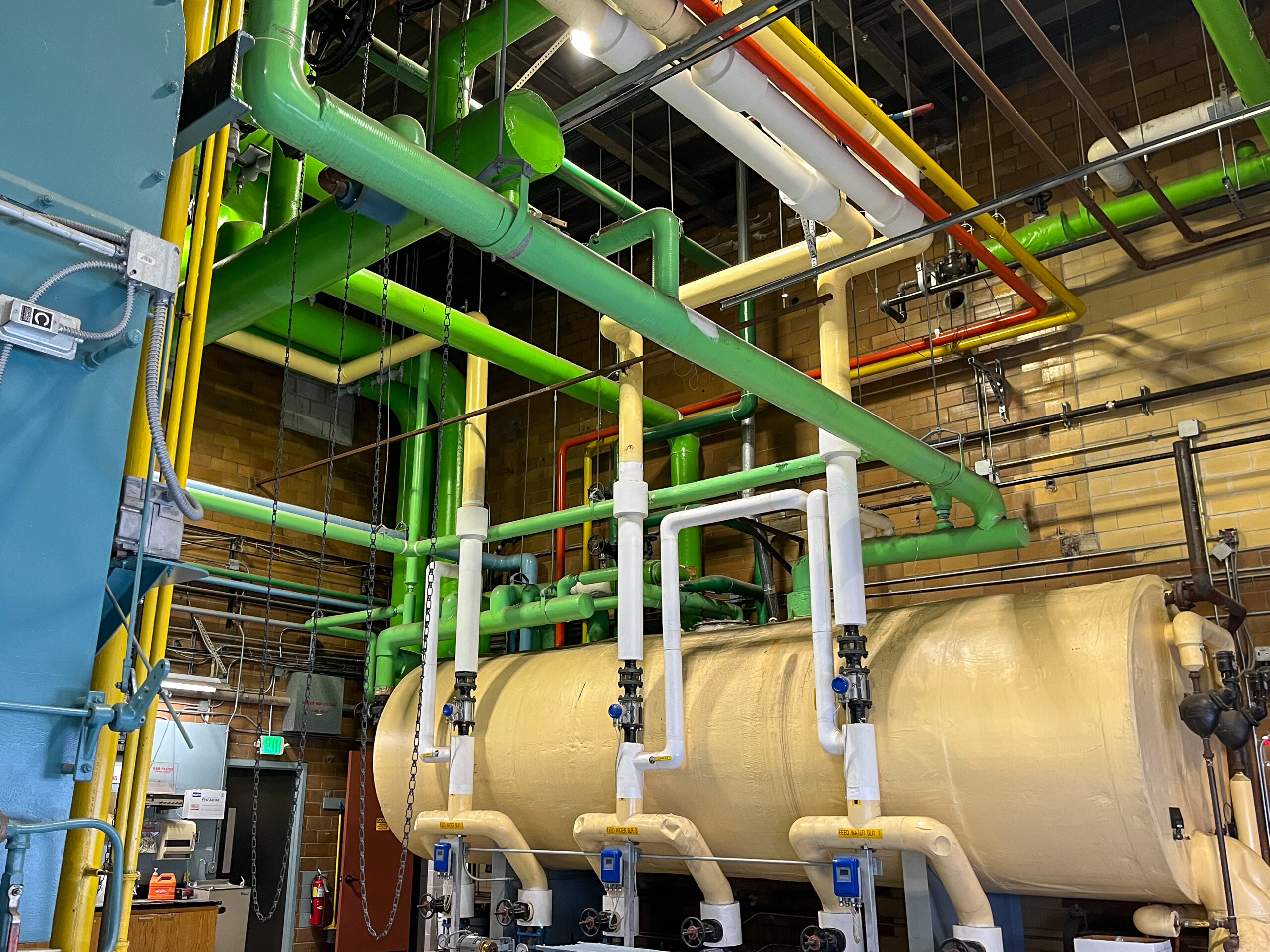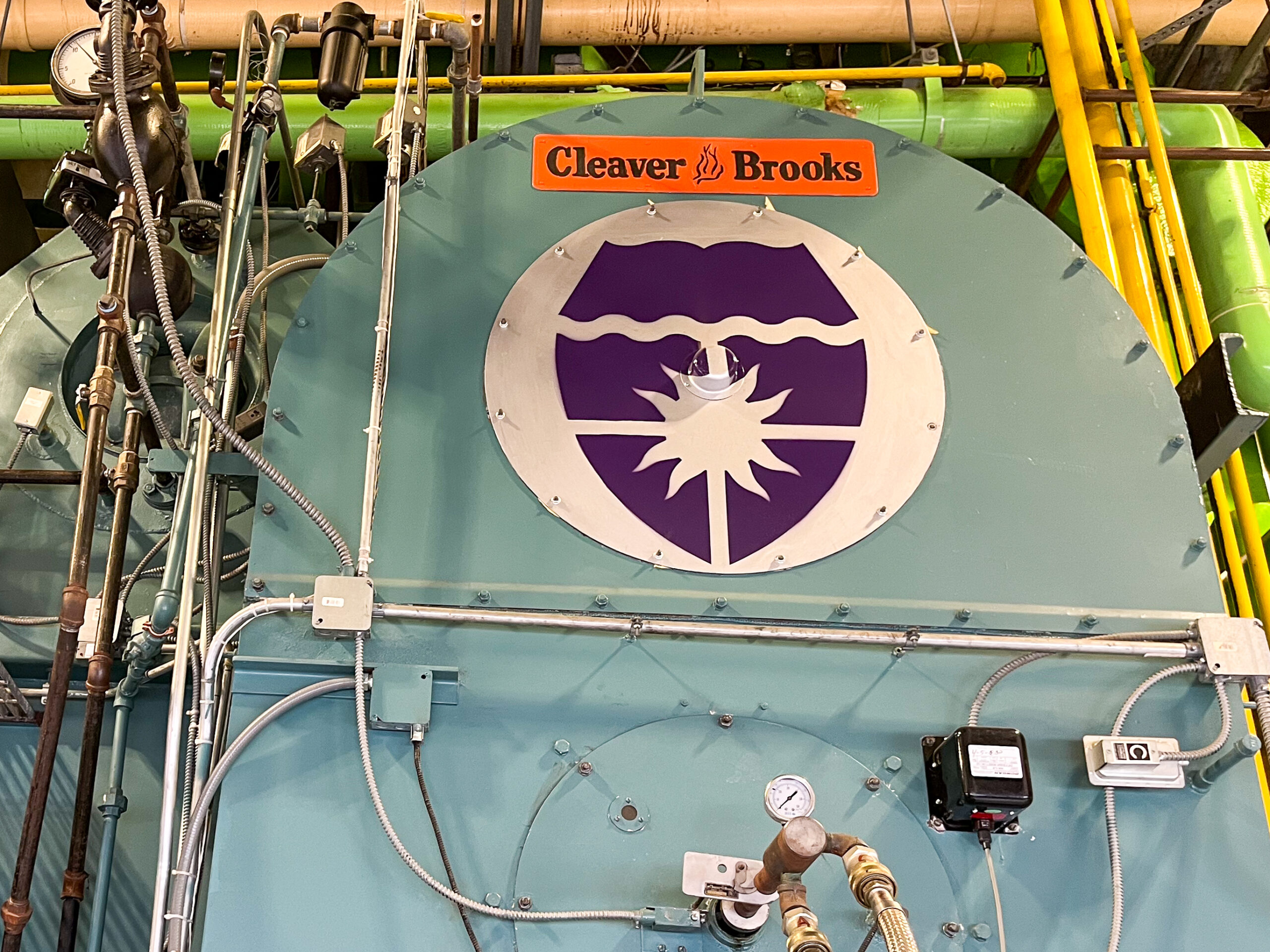Cramming for exams at the last minute. Staying up late to finish assignments. Sweating in the heat of your dorm room, even though it’s below zero outside. David Clysdale, the Mechanical Maintenance Supervisor for Facilities Management at St. Thomas, gave insight into how heating and cooling systems work throughout different buildings on campus.
There are two main heating, ventilating, and air conditioning plants on campus; one on the north campus and one on the south. The boilers are connected to pipes that run through tunnels and into every building on the north campus.
“The boiler system is an older technology,” Clysdale said, “but it actually works well for what we need.”
Brady and Dowling Residence Halls directly heat the buildings with a radiator in each room. But most of Facilities Management’s decisions depend on the outside weather.
“We don’t even turn the heat on until it’s 45 degrees outside. … The academic buildings get turned on first. They’re about 60 degrees because we really want you to have a good environment for learning. … (The Anderson) Student Center is 50-55 degrees and then the dorms are last,” Clysdale said.
As temperatures drop, the neighborhood surrounding the campus starts to use higher amounts of energy. St. Thomas’s boilers are usually heated by natural gas, but during these times, the university must switch to fuel oil, which is similar to diesel.
“We use about 6,000-7,500 gallons of fuel oil a day when temps drop below zero,” Clysdale said.
This fuel can be expensive, but the university is saving money in other ways. Now that the heating and cooling is a computerized system, Facilities Management does not have to turn on each pump individually. The system now turns on automatically based on the temperature outside.
“This year we didn’t have to turn on a boiler until mid-October, so we went from labor day to mid-October without using anything,” Clysdale said, “That’s a humongous saving right there.”
Not only is the university saving money, but it’s saving water as well. There is only a 10% loss of water every day, according to Clysdale.
20% of St. Thomas’ buildings have square footage that is LEED certified, according to the St. Thomas website. LEED is a green building certification program used worldwide.
The rating system, developed by the U.S. Green Building Council, stands for Leadership in Energy and Environmental Design. It is a point-based system that rewards projects with points corresponding to how much they address carbon, energy, waste, water, indoor environmental health, and other issues.
LEED Platinum is the highest certification that the U.S. Green Building Council awards. Following are Gold, Silver, and Certified with the lowest number of points.
“For Schoenecker (Center) we’re on track to get gold right now which is awesome,” Clysdale said. “We’re very fortunate to get platinum at Tommie East … That was really cool and really an accomplishment.”
Maria Dahmus, the co-founder and director of the Sustainable Communities Partnership at St. Thomas, wrote to TommieMedia via email about the goals St. Thomas has for sustainable heating and cooling.
“The university’s Sustainability Strategic Plan does consider heating and cooling systems. These systems (along with many other factors) impact the University’s overarching goal to reduce carbon emissions and achieve carbon neutrality by 2035,” Dahmus wrote.
The university also has made a commitment to obtain a minimum of a LEED Silver certification on new buildings larger than 25,000 square feet, such as the Schoenecker Center, set to open during the 2024 spring semester.
Abby Madsen can be reached at mads3817@stthomas.edu.
Maddy Orr can be reached at orr04506@stthomas.edu.



